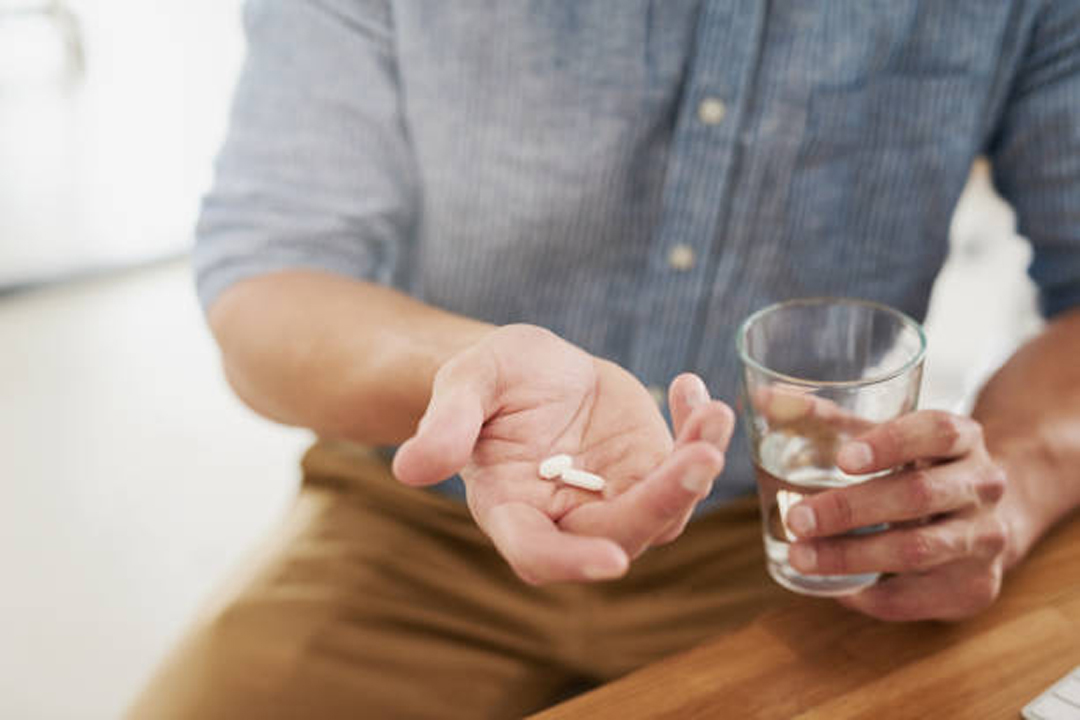Male impotence or erectile dysfunction, as doctors prefer to call it is one of the most common untreated medical disorders in the world.
In the US, as many as 20 million men may have problems getting or maintaining an erection.
The disorder’s prevalence increases with age. Only 5% of 40-year-olds experience erectile dysfunction. The rate among 70-year-olds is somewhere between 15% and 30%.
Of the men affected, however, only one out of 20 seeks medical help. That’s unfortunate for two reasons
- Consistent loss of erection is not normal at any age and can actually be a symptom of an illness.
- With many effective treatments now available and many more on the way, erectile dysfunction can almost always be treated successfully.
More than 80% of all dysfunction can be traced to a physical (organic) cause—usually an inability to keep blood trapped in the penis after it becomes erect.
A much smaller percentage of cases is psychological in origin. These patients tend to be younger and usually report no erection at all with a partner, though they may be able to become erect when they’re alone watching an erotic movie, for example. (When the dysfunction is physical, the patient will usually have at least a partial erection.)
Treating erectile dysfunction
While its occurrence is maximum among older men, trouble sustaining an erection is not a normal part of aging. A healthy male with a willing partner can expect to have one or two usable erections a week well into his 80s.
An occasional loss of erection is nothing to worry about. But if it happens consistently, see a physician who’s very experienced at treating erectile dysfunction either an internist specializing in erectile dysfunction (i.e., it makes up at least half of his/her practice) or a urologist.
Main difference: Only an urologist can surgically implant prosthesis.
What to expect
The first thing the doctor should do is take a medical history, including all psychological and sexual aspects of the dysfunction.
He/she should also give you a full physical checkup to identify any underlying illness that might be present. Trouble in getting or sustaining an erection is often a forecaster of vascular difficulties elsewhere in the body, comprising heart disease. Other factors that can affect your erection include
- High cholesterol.
- Cigarette smoking (which constricts the blood vessels leading to the penis).
- Excessive alcohol intake.
- Diabetes (as many as 60% of diabetic men may have erection problems at some point).
- Certain recommended drugs, mostly blood pressure and cardiovascular medicines, and certain antidepressants and tranquilizers.
- Radiation therapy.
- Pelvic surgery.
- Neurological disease, including Alzheimer’s, Parkinson’s and multiple sclerosis
Addressing these underlying causes can often solve the problem. If the dysfunction is psychological, you’ll probably be referred to a certified sex therapist. If the problem turns out to be a simple issue of communication with your partner, a therapist could help you resolve it relatively quickly.
When the dysfunction includes more deeply entrenched matters for example, inhibition or performance anxiety linked to religion, upbringing and social background it inclines to be more difficult and time intense to treat.
It’s all in your muscles
Most long-lasting erection problems aren’t in a man’s head, though, but in his muscle cells. Ninety percent of bodily dysfunction occurs because the penis fails elasticity and flexibility over time, till its capability to trap and store blood becomes lessened. No matter how much blood flows into the penis, it leaks back out.
This happens because the muscle cells in your penis become thinner with age, while their backup network of collagen (connective tissue) is no longer transformed as rapidly as when you were younger, and becomes less flexible. As a result, the muscles in your penis are unable to fully relax which is necessary for them to keep blood trapped in the penis.
Five treatments
Five types of treatment are now used to combat erectile dysfunction. Your choice of therapy should come only after discussing each option in detail with your doctor, and with your wife or sexual partner.
For a good outcome, it’s vital to treat erectile dysfunction as a couple’s problem, and include your mate in all aspects of treatment. I believe a supportive partner is the most important factor in regaining a full, healthy sex life.
• Oral medications

Sildenafil (Viagra) was approved by the FDA in 1998 and represents a new milestone in the arena of erectile dysfunction. Viagra works by enhancing blood flow towards the penis, as well as triggering penile muscles to ease. It does not pledge an erection, but helps supply penile flow in response to sexual encouragement by countering the chemical in the body that reduces an erection.
The FDA has also approved vardenafil (Levitra) and tadalafil (Cialis), two other drugs to treat impotence.
In addition, two other oral medications are currently undergoing clinical trials apomorphine and Vasomax and will probably not be as effective as Viagra, Levitra or Cialis. Yohimbine (a vasodilator), another popular oral medication, is worthless, in my opinion.
Antidepressant drug Trazodone, taken one hour just before sexual action, found to extend erections in men who are capable to get, but not uphold, an erection throughout contact. Trazodone, though, is much less operative than Viagra or Levitra.
• Topical cream
MUSE (Medicated Urethral System for Erection), which contains a prostaglandin cream that’s applied into the opening of the urethra just before intercourse, has also produced good results in clinical trials. This cream is a vasodilator, meaning that it causes blood vessels to widen encouraging blood flow into the penis. However, patient response has been very disappointing. With the approval of Viagra, this method has become less popular.
• Injection therapy
Prior to FDA approval of Viagra, this was the newest form of treatment to emerge over the past 20 years, and is still the most effective treatment currently available. A drug is injected at the base of the penis 20 minutes before intercourse, using a very small needle. Like creams, the drug works by dilating the blood vessels. The result is usually a very natural, high-quality erection.
When it was first used in the 1980s, the injection of choice was a mixture of papaverine and phentolamine. The injections have some side effects, including scarring from repeated injections, and sometimes a painfully prolonged erection (solved by reducing the dosage).
Approved by the FDA in 1995, prostaglandin El (Alprostadil), a substance that occurs naturally in penile tissue, is an injectable drug that can be self-administered at home. Tests show that scarring from prostaglandin El injections is minimal (occurring in only 1% of cases) and the satisfaction rate is very high. This is currently the only FDA-approved method for penile injection.
Eight out of 10 men tested reported a usable erection and satisfactory intercourse. It also appears to work well for some cases of psychological dysfunction.
• Vacuum device
This is the least invasive method of all, involving no medication or surgery. A tube is placed over the end of the penis. The device creates a vacuum that encourages blood to flow in, creating an erection. Elastic ring is snapped over the base of the penis.
While the success rate is very high with vacuum devices, only one-third of the men who buy them end up using them. The complaints: It’s too cumbersome, while the erection that results can be a bit painful and is usually not quite as hard as normal.
• Prosthetic device
If injections, pills and creams don’t do the job, you may want to think about having a prosthetic device implanted through a minor procedure in which a small opening in the skin is made between the testicles. This can be done using local anesthetic.
Currently the most popular device is an inflatable prosthesis, which includes a fluid reservoir and a small pump, which the patient activates to become erect. The prosthesis does not interfere with normal sensation or ejaculation. After implantation, the patient can’t even feel it or see it and often his partner can’t tell it’s there. However, once the patient selects the prosthesis option, injection therapy or the vacuum device will no longer be appropriate. Fortunately, the prosthetic device group of patients has an extremely high satisfaction rate.







